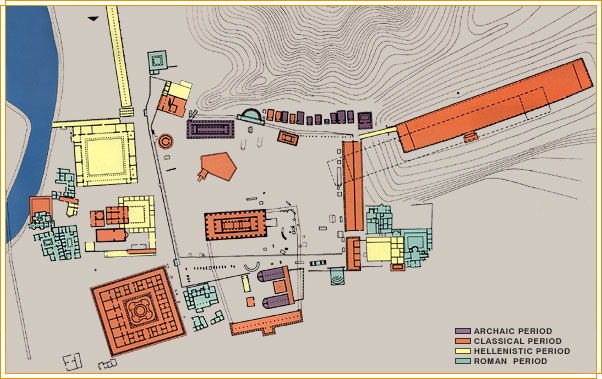 |
|
|
|
||
|
Topography of Ancient Olympia |
|||

|
|||
|
The Temple of Zeus Introduction | statue | metopes | pediments The Chryselephantine statue of Zeus The statue of Zeus was the work of the famous sculptor, Phidias, creator of the magnificent statue of Athena Parthenos that stood inside the Parthenon. It took more than twenty years after the Temple's construction for the statue to be completed. The impressive statue (12m. high) represented Zeus enthroned, crowned with an olive branch, holding a sceptre with an eagle on his left hand whereas a Nike was standing on his right palm. The statue had a wooden frame that was covered with golden and ivory sheets. The god's face, body, arms and legs were made of ivory while his clothes, hair, beard, scepter and the Nike were made of gold. The god's throne was made of gold, ebony, ivory and precious stones. It was decorated with various mythological scenes like the snatching of the Theban children, the slaughter of Niobe' s children as well as representations of athletic contests. The statue was placed on a base (9,93m. long and 6,25m. wide) made of black Eleusinian stone. Although no part of the statue has remained intact, we know the statue's original form by representations in coins as well as by the detailed description of Pausanias during his visit in Olympia in the 2nd century AD. The statue was transferred in Constantinople after the ban of the Olympic Games (393 AD) when it was destroyed in a fire in 475 AD. |
